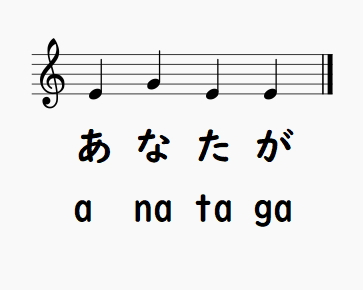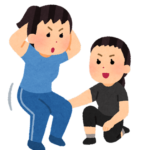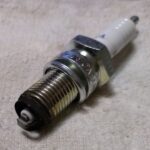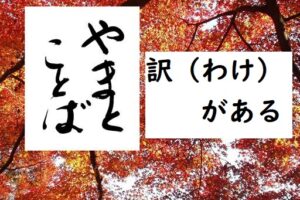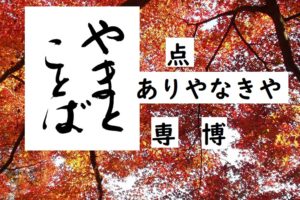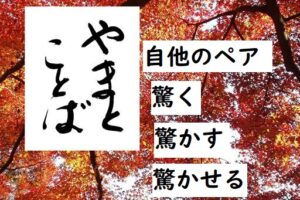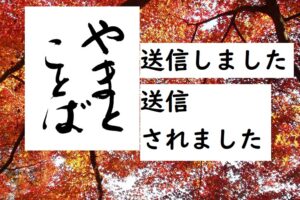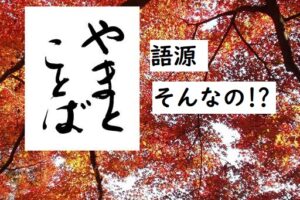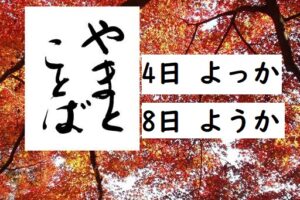目次をご覧になりたい方はクリックしてください→
「accent」「pattern」「fall」「core」
Japanese accent pattern アクセントの型 ~ 日本語
Accent rule
The pitch of 1st beat and 2nd beat are always different from each other.
I mean, if the 1st is low, then the 2nd is high.
If the 1st is high, then the 2nd is low.
The 1st beat is almost similar to the 1st letter.
L/H
H\L
H:high
L:low
There are only two patterns.
/ rise, go up
\ fall, go down, lower
Fall [core] of accent
“Fall [core] of accent” is a point where a tone goes down.
“Fall” means “waterfall” or “cascade”.
Only one “Fall of accent” per one chunk
There is only one “Fall of accent” per one chunk, usually almost one word.
Never rise again after fell
You can’t rise again if you’ve fallen a waterfall.
Never.
I said “chunk”, because it’s not always a word but some words including particles が、に、を、は (ga, ni, o, wa).
You might say as one chunk speaking with normal speed, but you might say separately some chunks speaking slowly.
The “Fall of accent” is very important to distinguish a chunk from another.
four accent patterns
head-high
H\L
箸が (は\しが) ha\shi (ga)
“hashi” means chopsticks here.
“ga” is a particle.
Japanese particles are put just after nouns.
They are said “post-position [positive] (s)”.
Most English particle are put just before nouns.
Then they are said “pre-position [positive] (s)”.
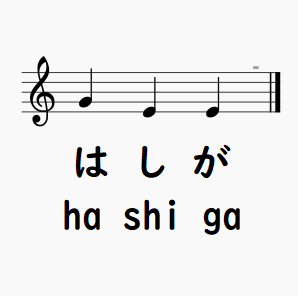
Once tone went down, never would rise again including following particle.
カ\ラスが ka\rasu (ga)
タ\ンポポが ta\npopo (ga)
We actually pronounce “tanpopo” like “tampopo”.
I’ll explain it on another article.
middle-high
L/H\L
あ/な\た (が) a/na\ta (ga)
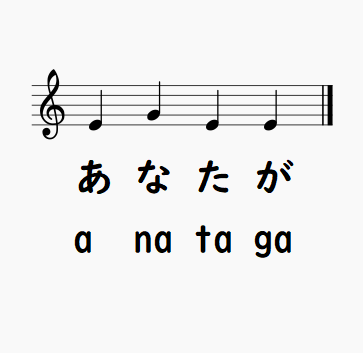
Once tone went down, never would rise again including following particle.
If a word has some letters, high part and low part will continue.
But is only one “Fall of accent”.
L/H~H\L~L
玉ねぎ た/まね\ぎ ta/mane\gi
冷蔵庫 れ/いぞ\うこ re/izo\uko
高校野球大会 こ/うこうやきゅうた\いかい ko/ukou yakyuu ta\ikai
We Japanese pronounce “ou” like [o:], “uu” like [u:].
So “reizouko” is like [reizo:ko], “koukou” is like [ko:ko:], “yakyuu” is like [yakyu:].
tail-high
L/H (\)
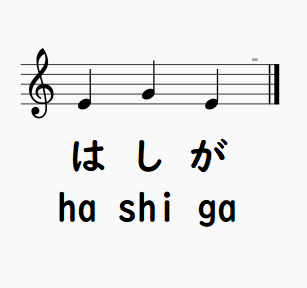
橋が は/し (\) (が) ha/shi (\) (ga)
男が お/とこ (\) (が) o/toko (\) (ga)
tail-high are rare, but exist among family relationship😮
男 (おとこ oto/ko) 、女 (おんな on/na) 、弟 (おとうと o/to:to) 、妹 (いもうと i/mo:to) 、親 (おや o/ya) 、みんな min/na
flat
L/H (H)
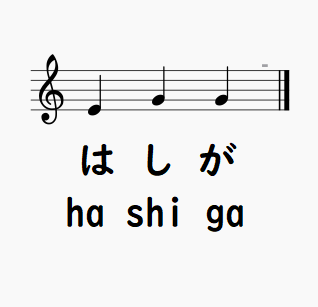
端が は/し (が) ha/shi (ga)
布団が ふ/とん (が) fu/ton (ga)
回覧板が か/いらんばん (が) ka/iranban (ga)
* 回覧板 local and civil circular bulletin [notice]
A word will go down at its end in three other pattern , but only “flat” will maintain high including following particle.
I mean, “flat” has no “Fall of accent”!
Difference between tail-high and flat
Both of word end will keep high.
tail-high : following particle will go down.
flat : following particle will maintain high.
Flattening
Flattening is trend today.
彼氏 か\れし ka\resh→か/れし ka/reshi
バイク ば\いく ba\iku→ば/いく ba/iku
ギター ぎ\たー gi\ta:→ぎ/たー gi/ta:
クラブ く\らぶ ku\rabu→く/らぶ ku/rabu
There are many loanwords or imported words especially English.
They will tend to flatten if they would have left from images of foreign words but become common as Japanese words.
No rules
We say it “arbitrary”.
You can see in loanwords, especially in country names.
head-high : ど\いつ do\itsu。す\いす su\isu。け\ーき ke\:ki。
middle-high : す/ぺ\いん su/pe\in。と/りにだーどと\ばご to/rinida:doto\bago。あ/ぜるば\いじゃん a/zeruba\ijan。ちょ/これ\ーと cho/kore\:to。
flat : あ/めりか a/merika。ふ/らんす fu/ransu。ぽ/るとがる po/rutogaru。きゃ/らめる kya/rameru。
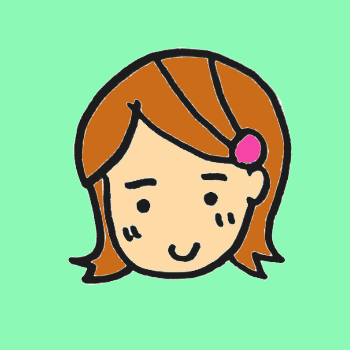
I have no idea for tail-high.
First of all, there are few tail-high in Japanese.
There are some tendency;
Three letters (tones) : head-high
Four letters (tones) : flat
More than five letters (tones) : middle-high
There are some exceptions as examples above.
I wonder if the one who imported a word had decided its pattern as the word and pronunciation had not exist in Japanese language before.
It might occur that ど\いつ do\itsu would become ど/いつ do/itsu like ば\いく ba\iku had become ば/いく ba/iku some day.
I’m a professional Japanese teacher.
Please contact me😊
Toshi in italki.
https://www.italki.com/teacher/8455009/japanese



